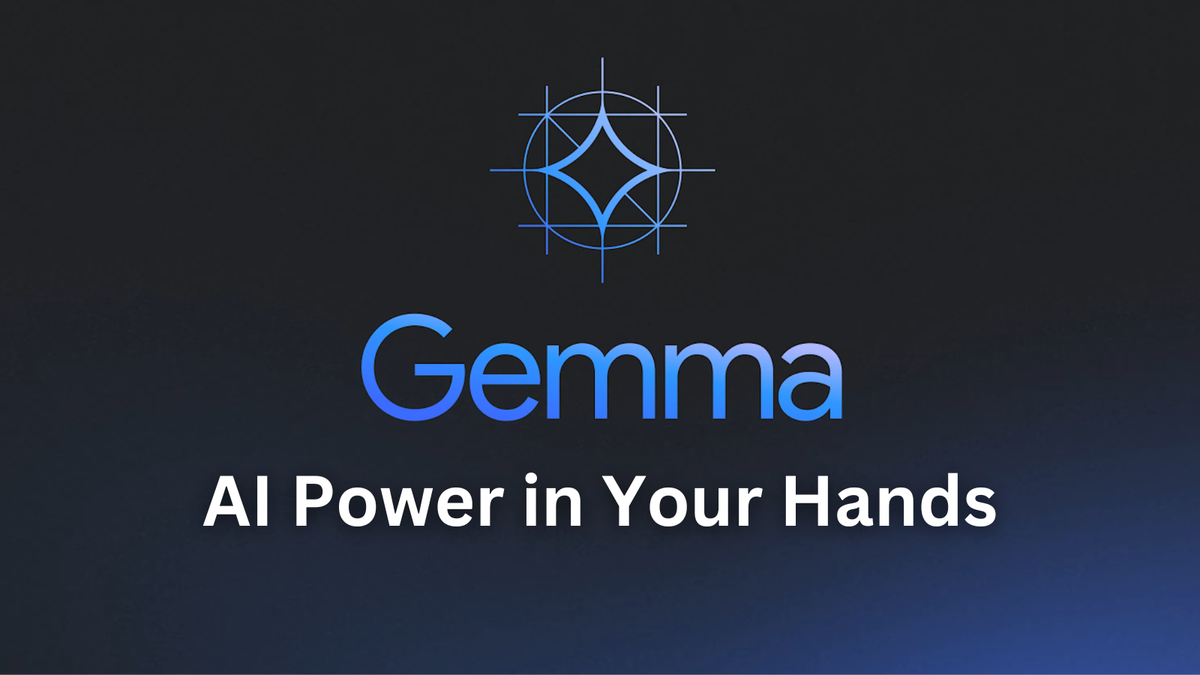Gemma 3: AI Power in Your Hands

Google just dropped Gemma 3, and it’s their most advanced, portable AI model yet. Designed to run on a single GPU or TPU, Gemma 3 delivers top-tier performance without the need for massive infrastructure.
Here’s why developers, researchers, and AI enthusiasts should care. 👇
Why Gemma 3 Is a Game-Changer
Gemma 3 is built with the same cutting-edge research that powers Google’s Gemini 2.0, but it’s lighter, faster, and more accessible.
🔥 Performance that beats the competition – Outperforms Llama3-405B, DeepSeek-V3, and o3-mini in human preference evaluations.
🌍 140+ language support – Making it one of the most globally accessible AI models.
🖼️ Advanced multimodal capabilities – Can analyze text, images, and even short videos for deeper AI-driven insights.
🧠 128K-token context window – Handles complex reasoning and long-form content like never before.
⚡ Optimized for speed with quantized models – Runs faster with lower computational costs while maintaining accuracy.
And the best part? It can run on your laptop, workstation, or cloud server—no supercomputer required.

The Future: More Small Language Models (SLMs) on Devices
While large language models (LLMs) continue to improve, I believe the future of AI lies in Small Language Models (SLMs) running directly on smartphones and other edge devices.
🔹 SLMs will become more powerful, reducing the need for cloud-based processing.
🔹 More tasks will be executed locally, improving speed and efficiency.
🔹 Privacy will be better protected, as sensitive data won’t need to be sent to external servers.
Apple has already embraced this approach, where on-device AI handles tasks and only calls on cloud-based LLMs when necessary. Google’s Gemma 3 could push this even further, making AI-powered features faster, safer, and more private.
As SLMs grow more capable, cloud dependency will shrink—giving users greater control over their data.
Built-In Safety with ShieldGemma 2
Google is also launching ShieldGemma 2, an AI-powered image safety checker that detects dangerous, explicit, and violent content.
This means developers can build AI applications with built-in safety features, ensuring responsible AI deployment.
Bringing AI Development to Everyone
Gemma 3 is designed to integrate seamlessly with the tools you already use:
✅ Supports Hugging Face, PyTorch, JAX, Keras, Google AI Edge, and more.
✅ Deploy easily on Google Cloud, Vertex AI, or even your gaming GPU.
✅ Optimized for NVIDIA GPUs, Google TPUs, and AMD’s ROCm stack.
Google is also funding AI research through the Gemma 3 Academic Program, offering $10,000 in Google Cloud credits to researchers.
Final Thoughts: A New Era of AI Accessibility
With Gemma 3, Google is making powerful AI models accessible to everyone, from startups to researchers to enterprise developers.
But the real future of AI isn’t just about massive LLMs—it’s about making AI smarter and smaller. As SLMs evolve, we’ll see more on-device AI, reducing cloud dependency and enhancing user privacy.
💬 Do you think Small Language Models (SLMs) will replace cloud-based AI? Will on-device AI become the norm? Let’s discuss on X(Former Twitter)!
References:
- Google DeepMind, Introducing Gemma 3: The Most Capable Model You Can Run on a Single GPU or TPU, March 2025.https://blog.google/technology/developers/gemma-3/



